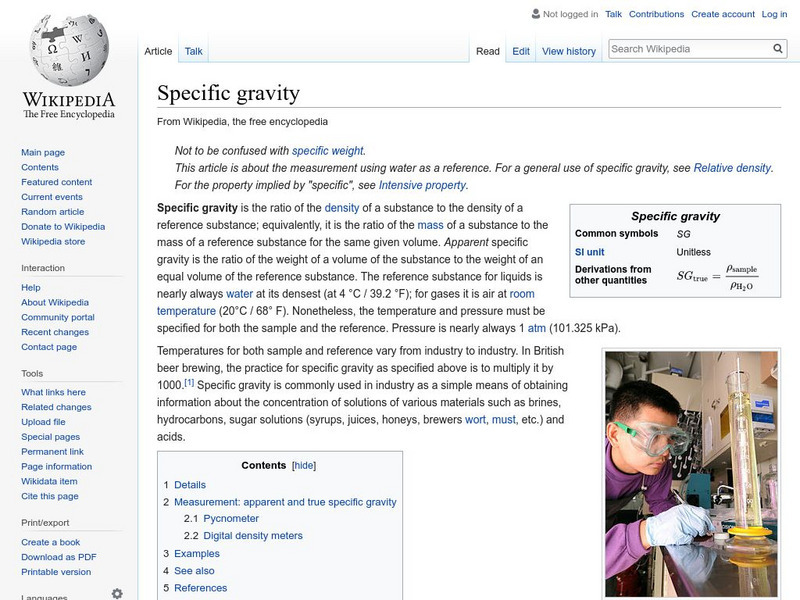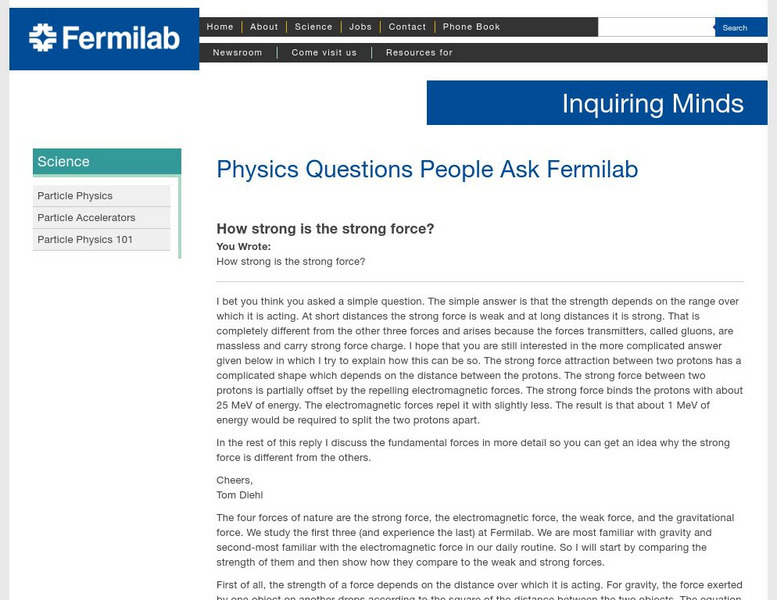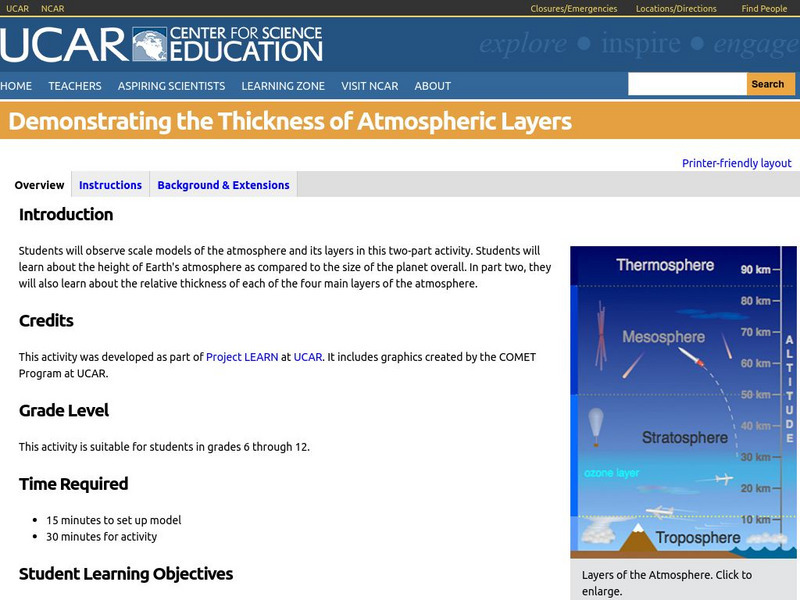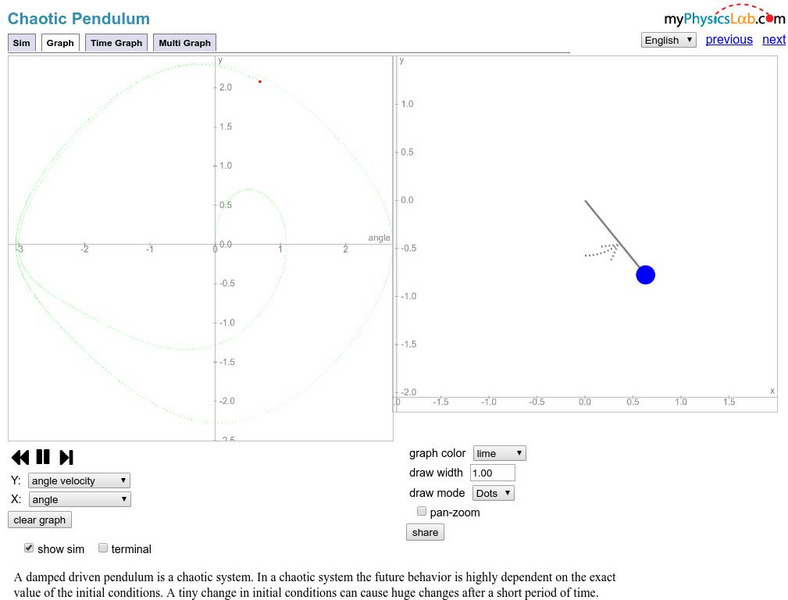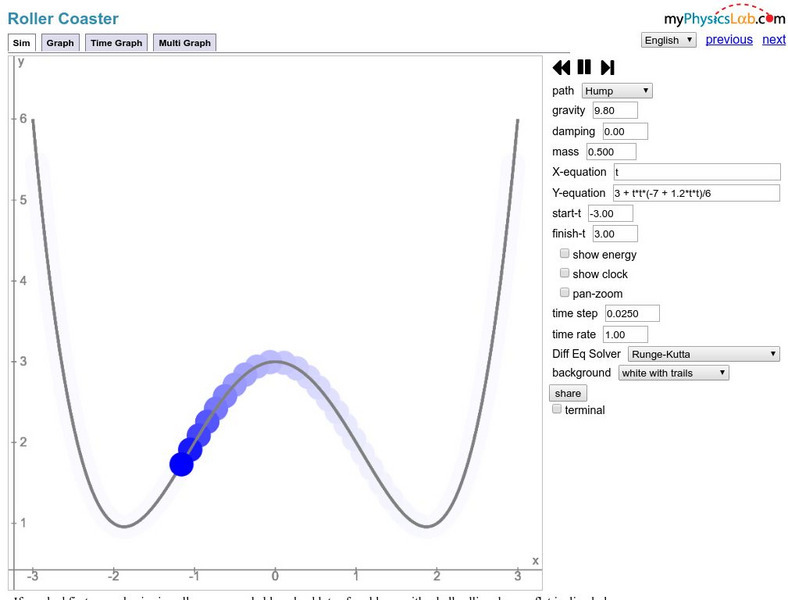Texas Instruments
Texas Instruments: What Is Gravity?
In this activity, students will perform a series of experiments with inclined planes. They will learn that as the angle of inclination of the inclined plane approaches 90 degrees, the value of the acceleration of the cart traveling down...
Texas Instruments
Texas Instruments: What Is Gravity? Activity Modeling Motion
This activity serves as a follow-up to Activity 4 in the Explorations book, Modeling Motion: High School Math Activities with the CBR by Linda Antinone, Sam Gough, and Jill Gough (Texas Instruments Incorporated, 1997).
Khan Academy
Khan Academy: What Is Newton's First Law?
Newton's First Law also called the law of inertia is the most important thing to realize about motion. This article offers more information on motion and explains solved problems involving Newton's First Law. Also included is a video...
Khan Academy
Khan Academy: What Is Newton's Third Law?
This article offers a description and real-life examples of Newton's Third Law. Practice questions are included to test your knowledge!
Khan Academy
Khan Academy: What Is Weight?
This article on weight will help you prepare for the AP Physics test. Included are example problems to help you practice.
TED Talks
Ted: Ted Ed: How to Think About Gravity
Video describes what gravity is and how it operates between two masses. Followed by a short quiz and a list of additional resources to explore. [4:44]
Ducksters
Ducksters: Physics for Kids: Gravity
Kids learn about the science behind gravity, the mysterious force of planet earth including why it is important, what is weight, and fun facts. What is gravity?
American Museum of Natural History
American Museum of Natural History: Meet the Universe's Main Attraction Gravity
Illustrated and animated series of short articles answers the questions, what is gravity? and what does it do?
Science Education Resource Center at Carleton College
Serc: Investigating the Constancy of Gravity: Free Fall Using a Water Bottle
In this physics interactive lecture demonstration, students will predict what will happen if a plastic bottle, filled with water and having a hole near the bottom, is dropped. Will the bottle fall at the same rate as the water inside the...
E-learning for Kids
E Learning for Kids: Science: Pirates: What Are Some Forces Around Us?
Covers the meanings of force, friction, and gravity, and the differences between magnetic and elastic spring force, and between weight and mass. The effect of air resistance on an object's motion is also touched upon.
Khan Academy
Khan Academy: The Buoyant Force Does Not Get Smaller as You Sink
This article explains the buoyant force using a submarine as an example. It also discusses what determines the size of the buoyant force using a formula, and explains decompression sickness better known as the bends.
My Science Site
My Science Site: What Drops Faster? [Pdf]
This resource provides a simple science activity teachers can use to teach gravity and mass. This resource is in PDF form; requires Adobe Reader.
Wikimedia
Wikipedia: Specific Gravity
Wikipedia offers a brief explanation on what specific gravity is and why it is measured in terms of density of water. The equation for its measurement is also given.
Other
Fermi Laboratory:how Strong Is the Strong Force?
Use this site to learn about the four forces of nature. Also learn what determines the strength of a force. This question and answer site is a link of the Fermi National Accelerator Laboratory.
University Corporation for Atmospheric Research
Ucar: How High Does the Atmosphere Go?
This lesson shows the parts of the atmosphere and their size (thickness) relative to the size of the Earth. It includes background information, lesson outline, links to standards and assessments.
Wikimedia
Wikipedia: Gravitropism (Geotropism)
Gravitropism (or geotropism) is how a plant responds to gravity. Roots have a positive reaction to gravity and they grow toward it. Stems have a negative reaction and grow away from gravity. Learn more about what happens inside a plant...
NASA
Nasa: Kepler and His Laws
This site from NASA provides biographical details about the lives of Tycho Brahe and Johannes Kepler. Discusses Kepler's successes at developing laws of planeatry motion. States the three laws and discusses each one individually....
Other
My Physics Lab: Double Pendulum
Experiment with a double pendulum to see what happens to the oscillation when you change the mass, gravity, or damping. Students can also change the starting position. The site includes equations to help students understand what is...
Other
My Physics Lab: Chaotic Pendulum
Experiment with a damped driven pendulum to see what happens to the oscillation when you change the mass, gravity, or damping. Students can also change the starting position. Site includes equations to help students understand what is...
Other
My Physics Lab: Simple Pendulum
Experiment with a pendulum to see what happens to the oscillation when you change the mass, gravity, or damping. Students can also change the starting position. Site includes equations to help students understand what is happening in the...
Other
My Physics Lab: Roller Coaster
Create a simplified roller coaster with this simulation by creating a track shape for a ball to travel on. Students can change gravity and damping. Site includes equations to help students understand what is happening in the simulation.
Science Education Resource Center at Carleton College
Serc: Investigating Calculating the Effect of Mass, Length and Displacement
In this physics lab activity young scholars investigate how mass, length and angular displacement affect the period of a simple pendulum. Students control variables, testing one variable at a time, using manual techniques (stopwatch,...
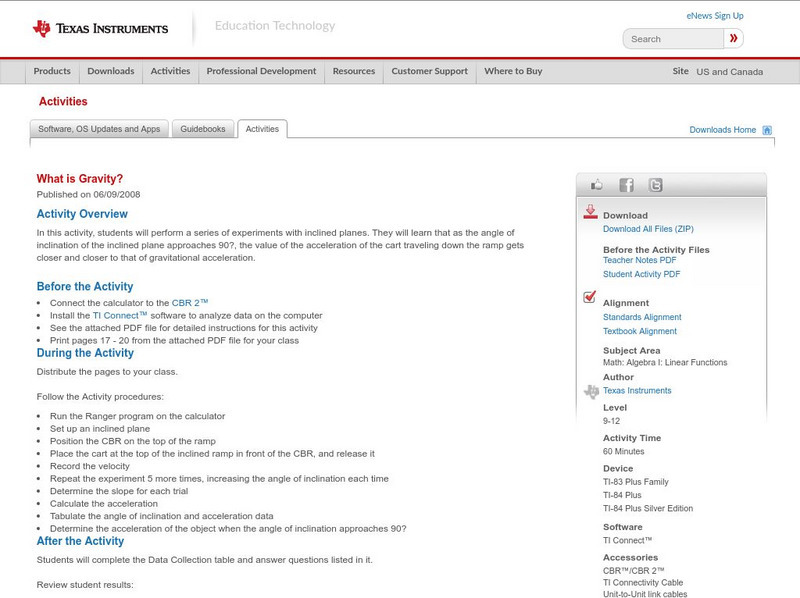











![My Science Site: What Drops Faster? [Pdf] Activity My Science Site: What Drops Faster? [Pdf] Activity](https://d15y2dacu3jp90.cloudfront.net/images/attachment_defaults/resource/large/FPO-knovation.png)
